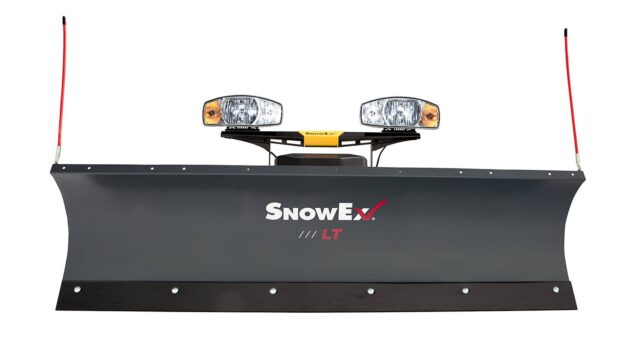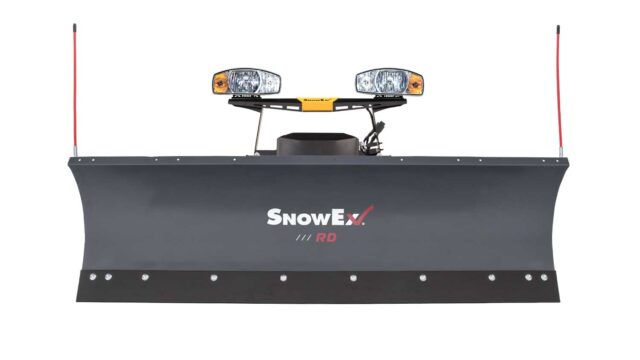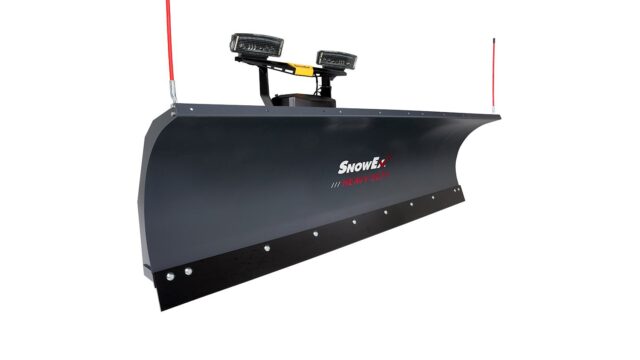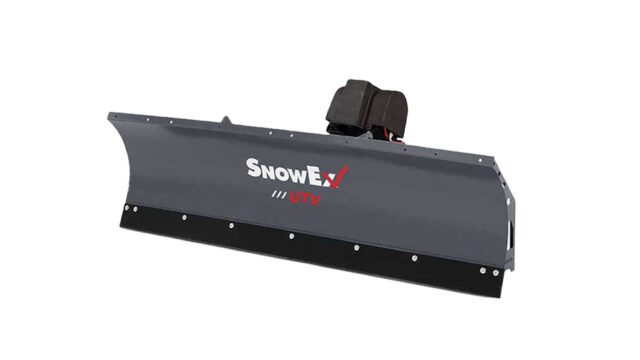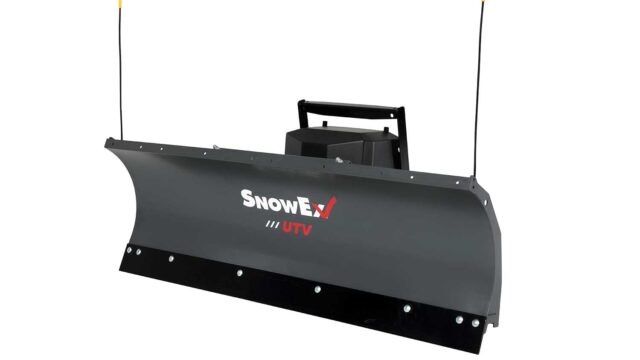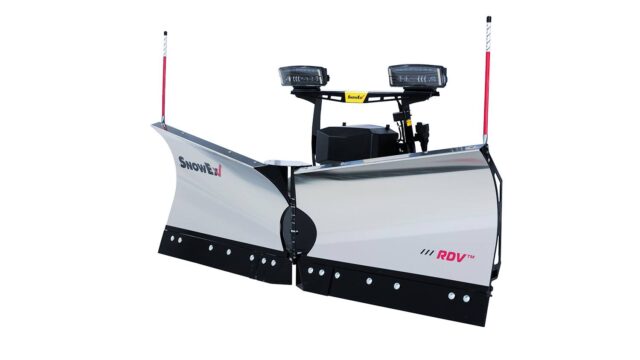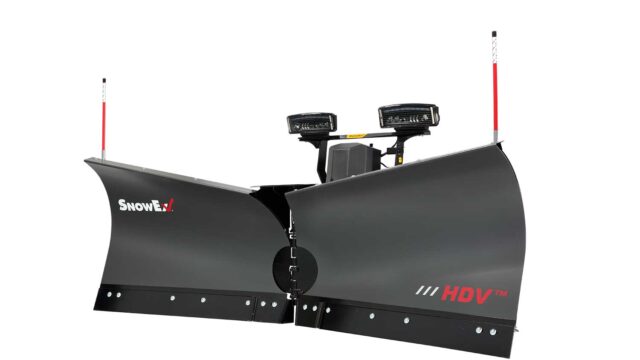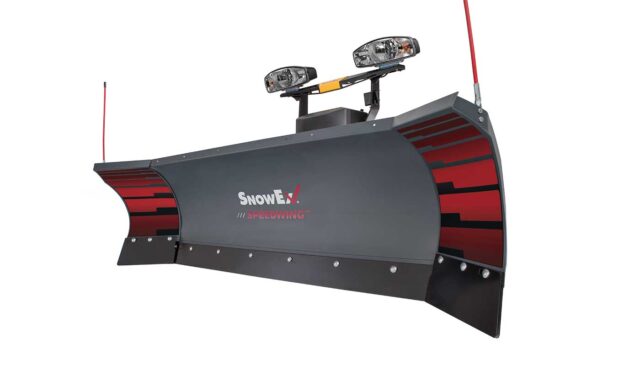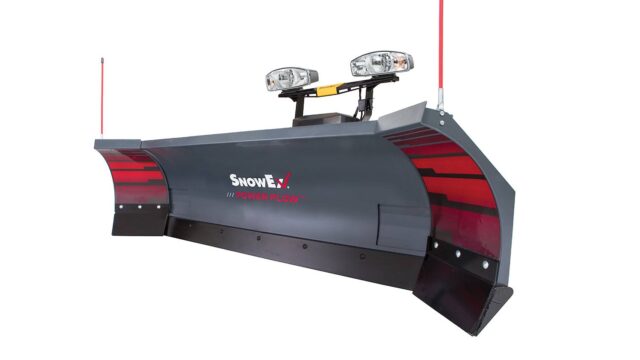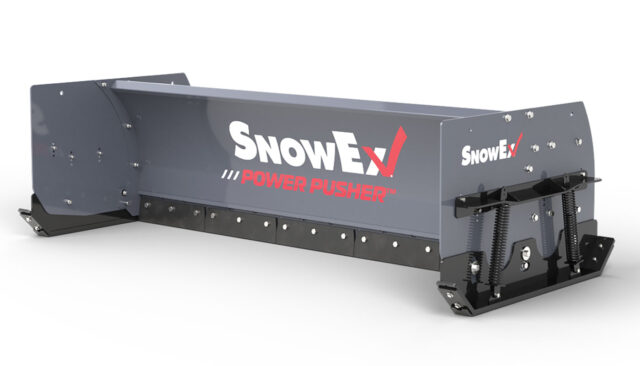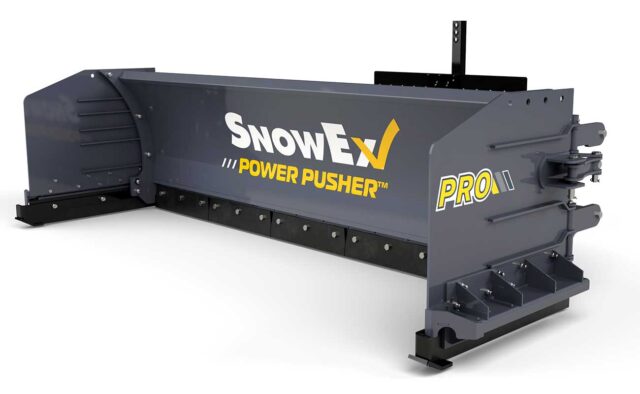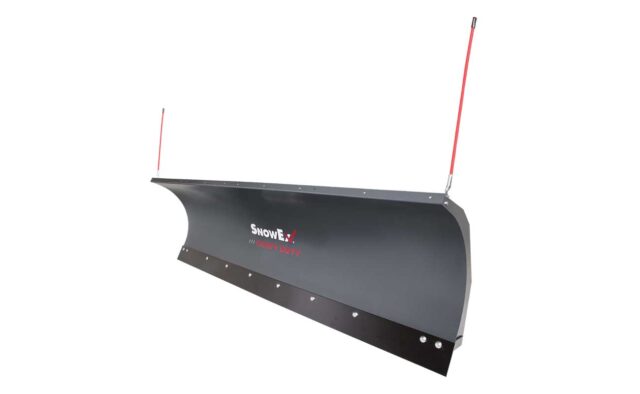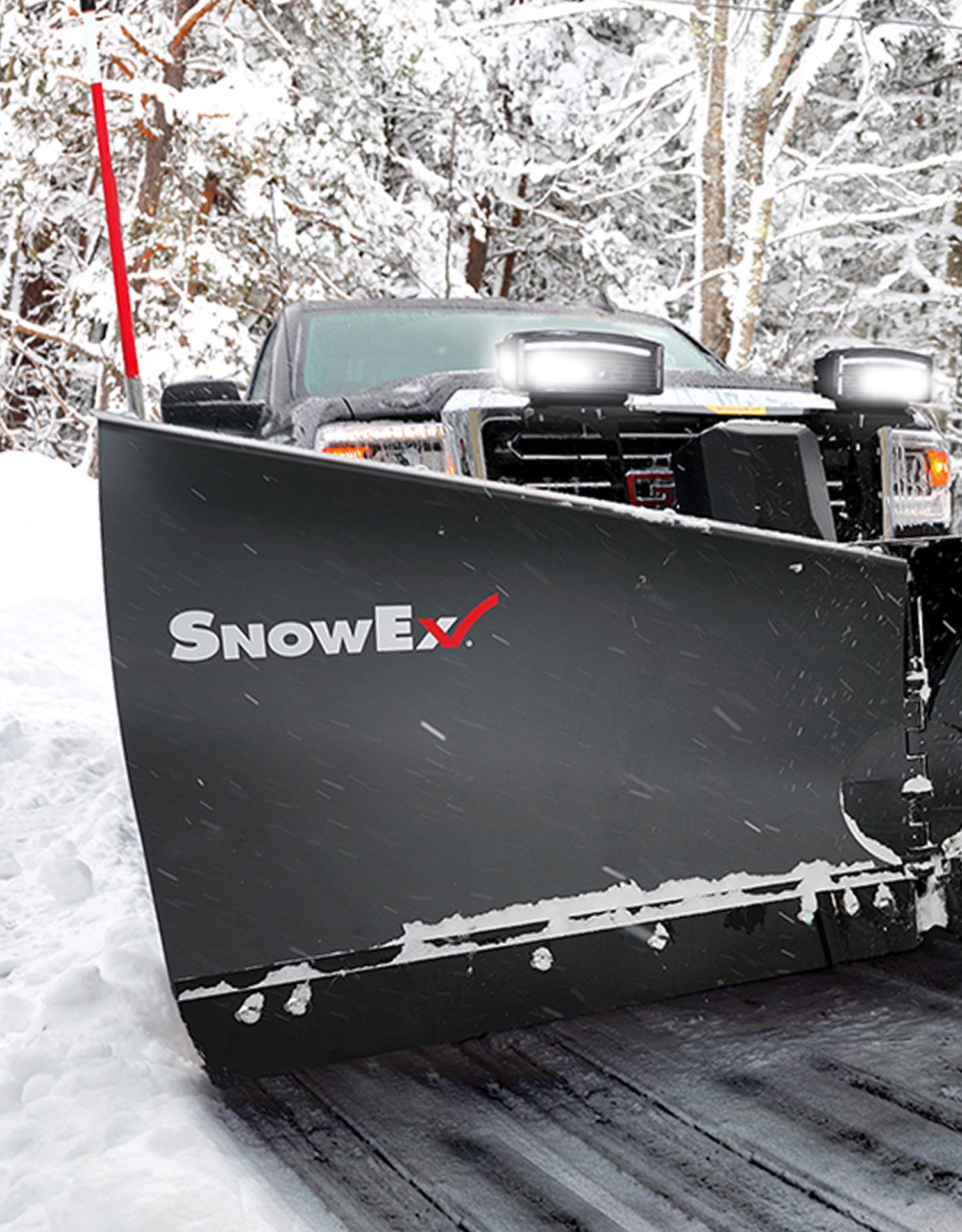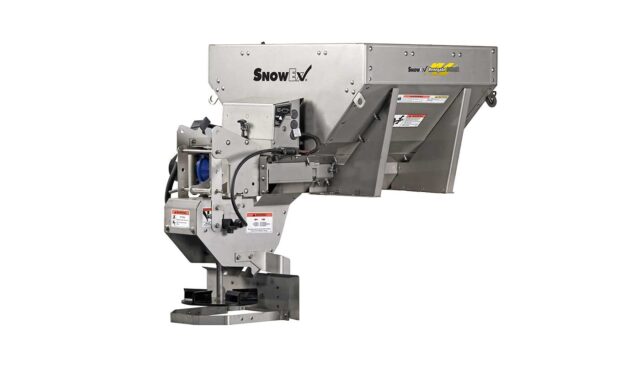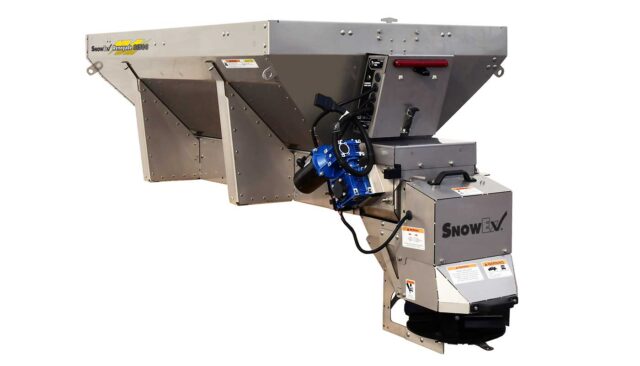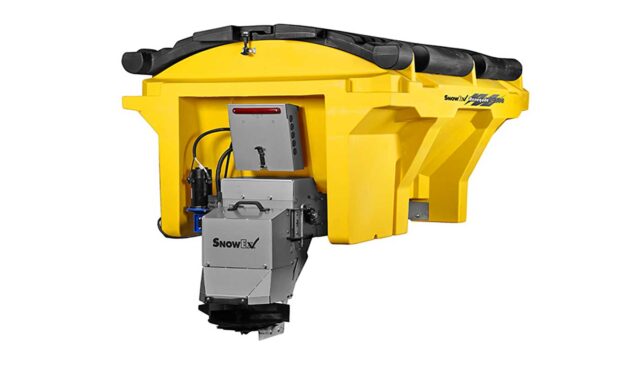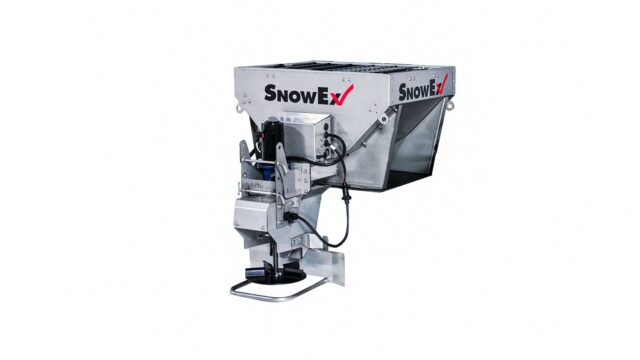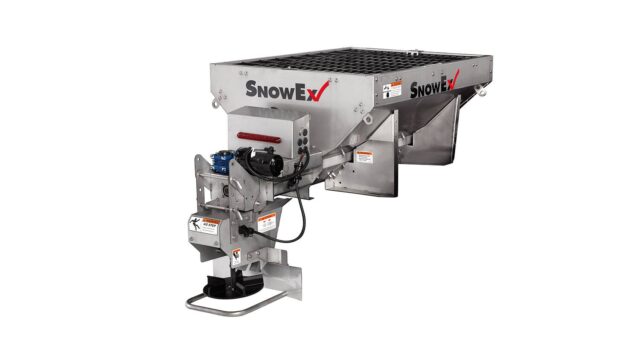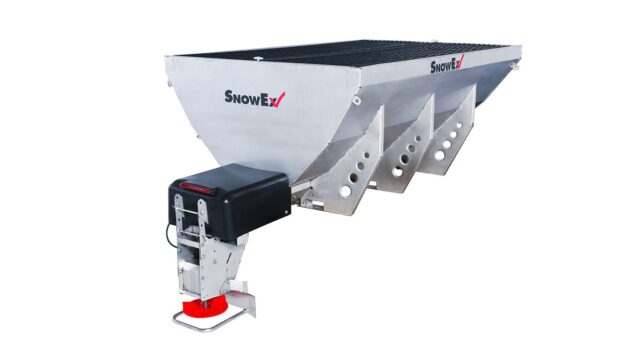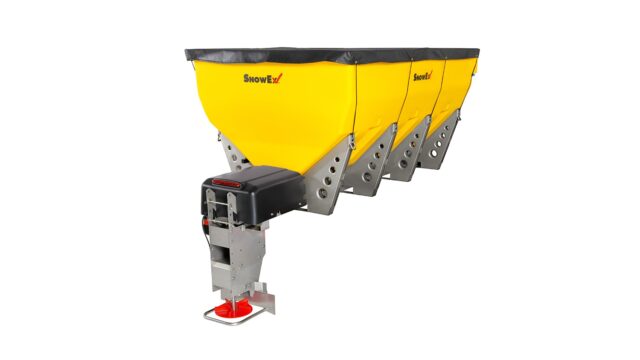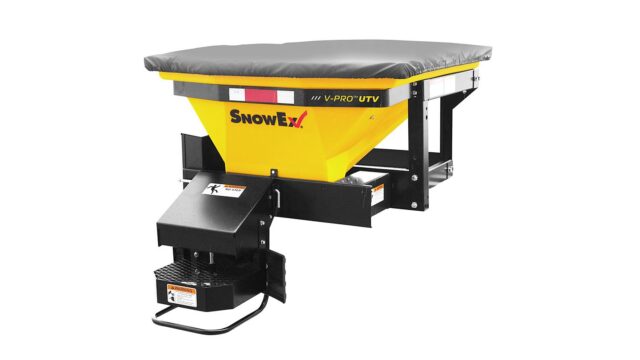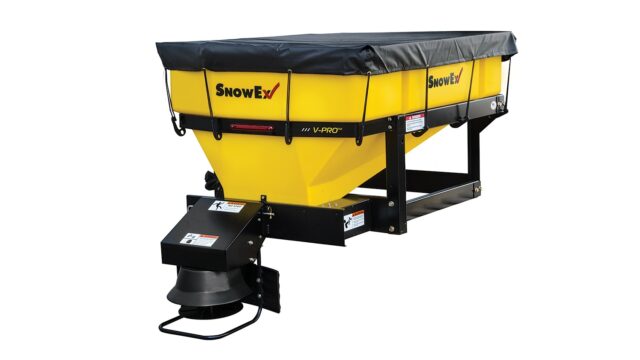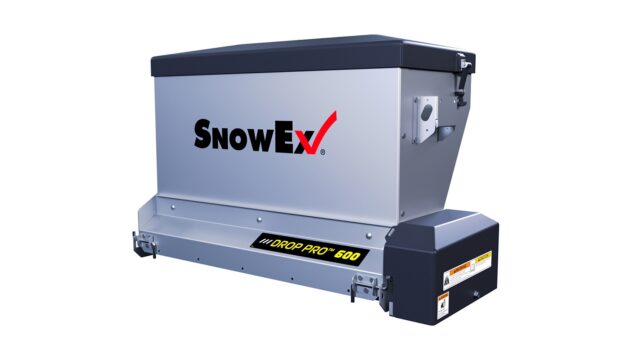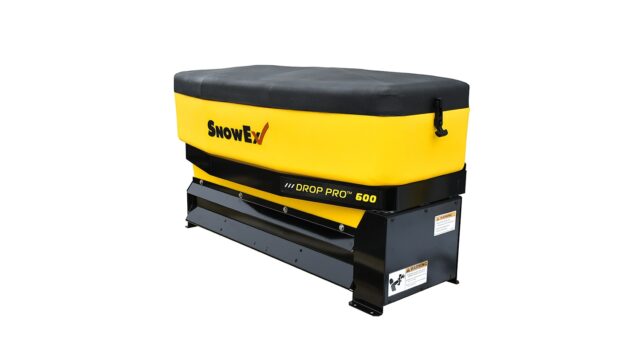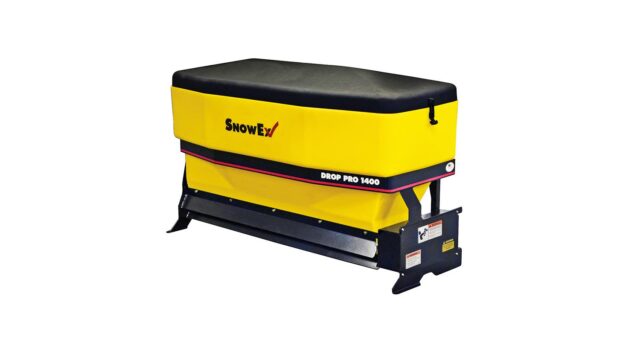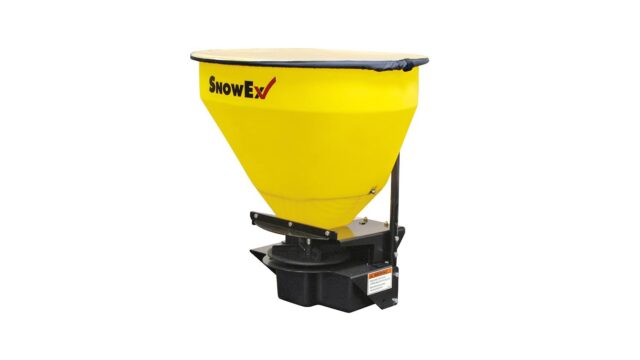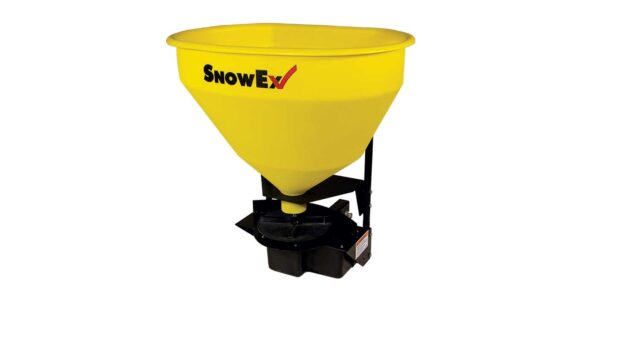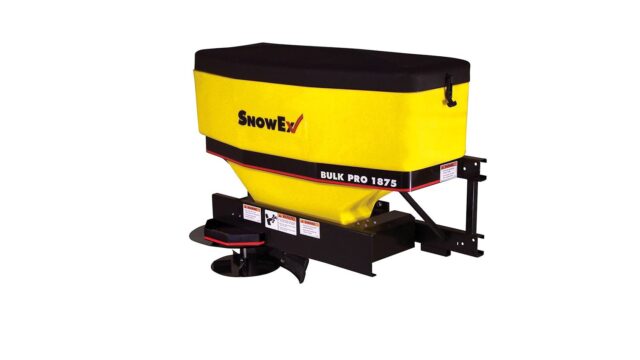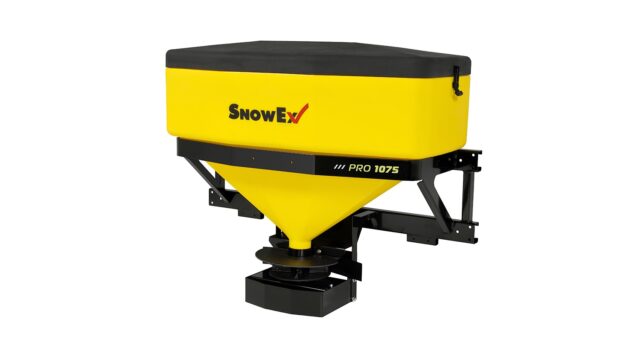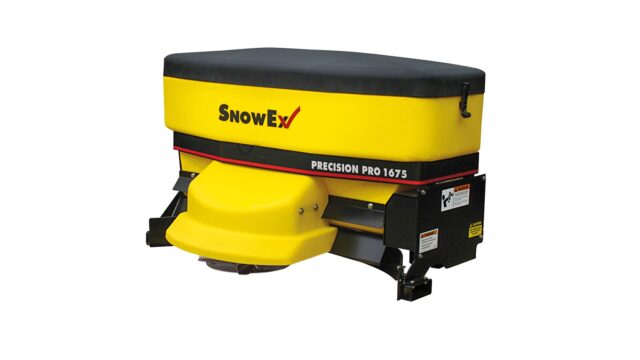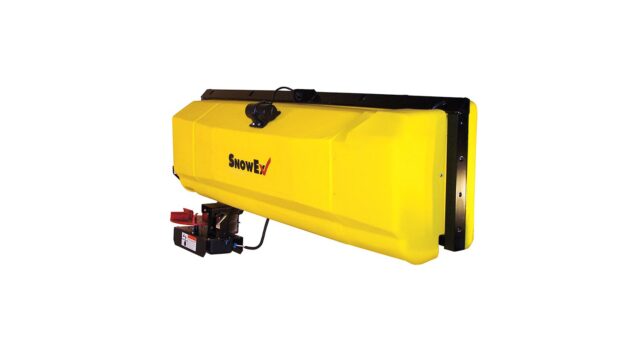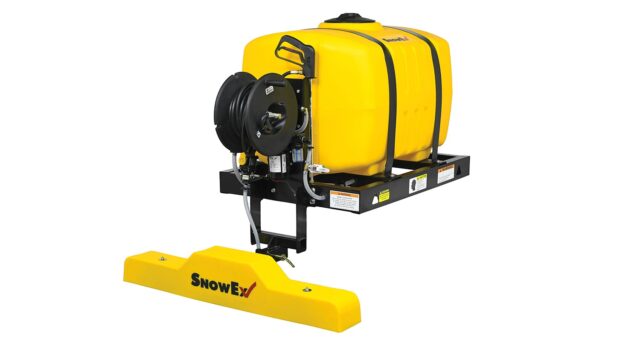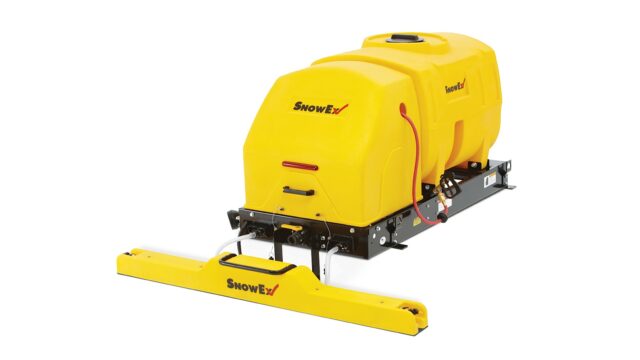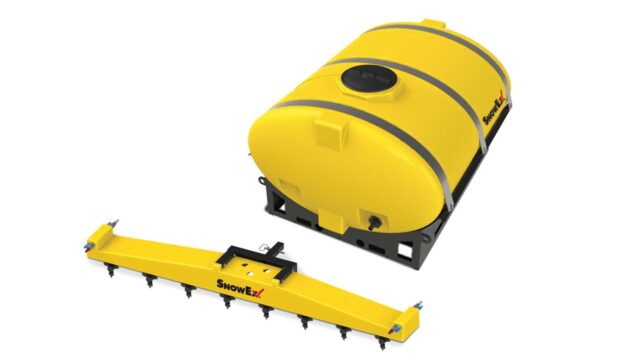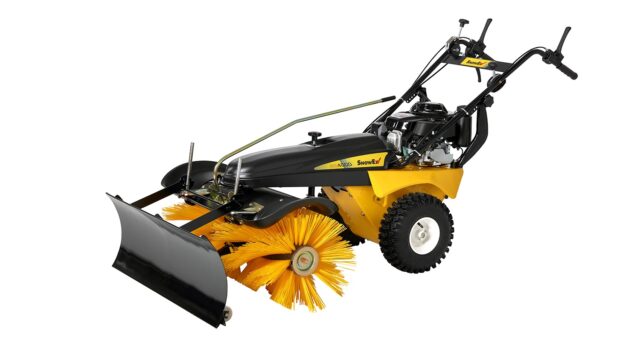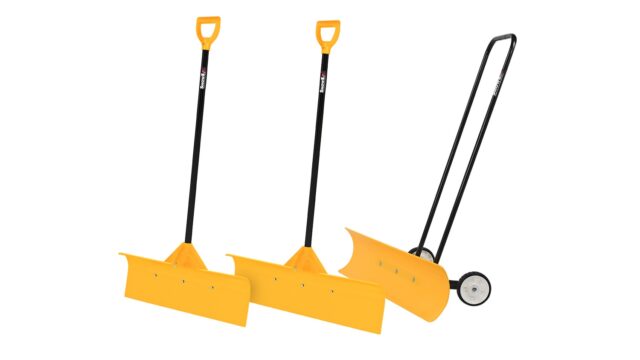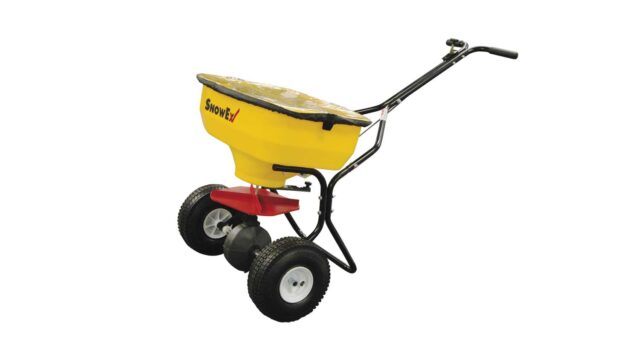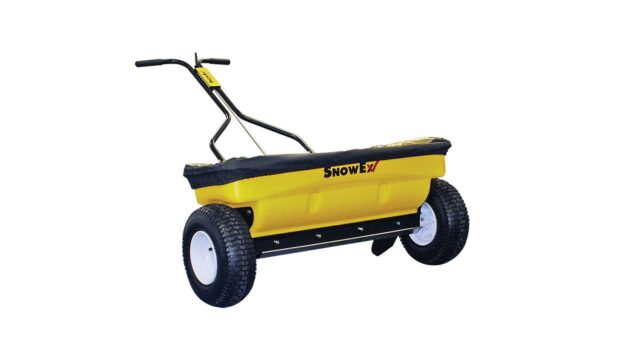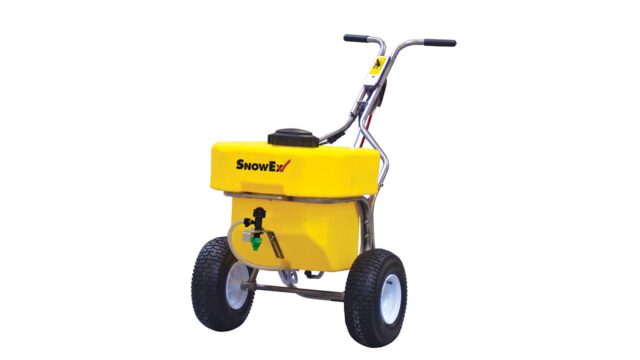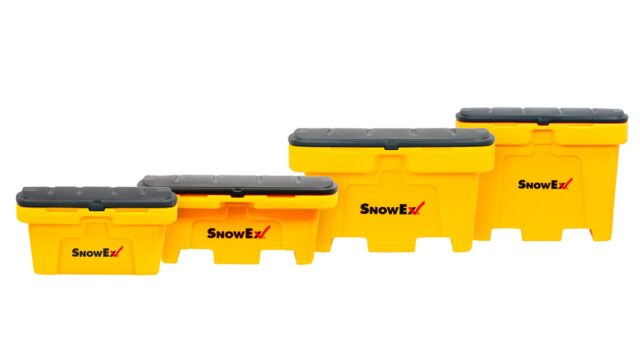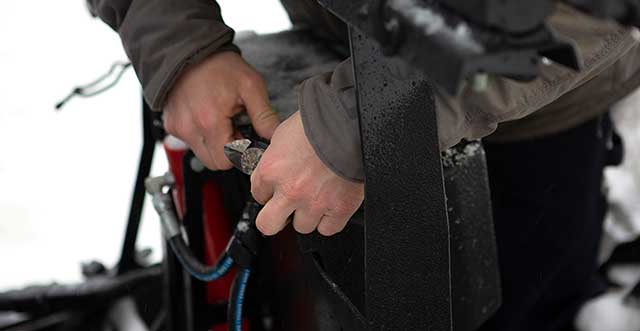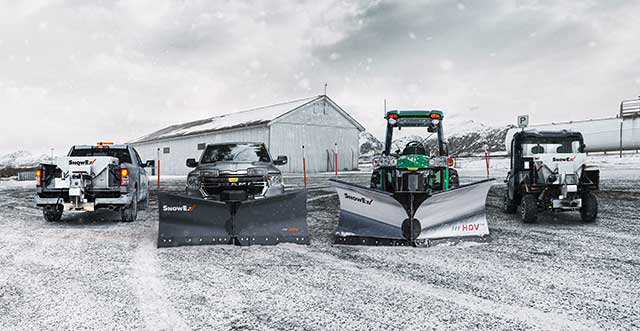Amp Up Your Material Program Using Liquids
Created March 31, 2020
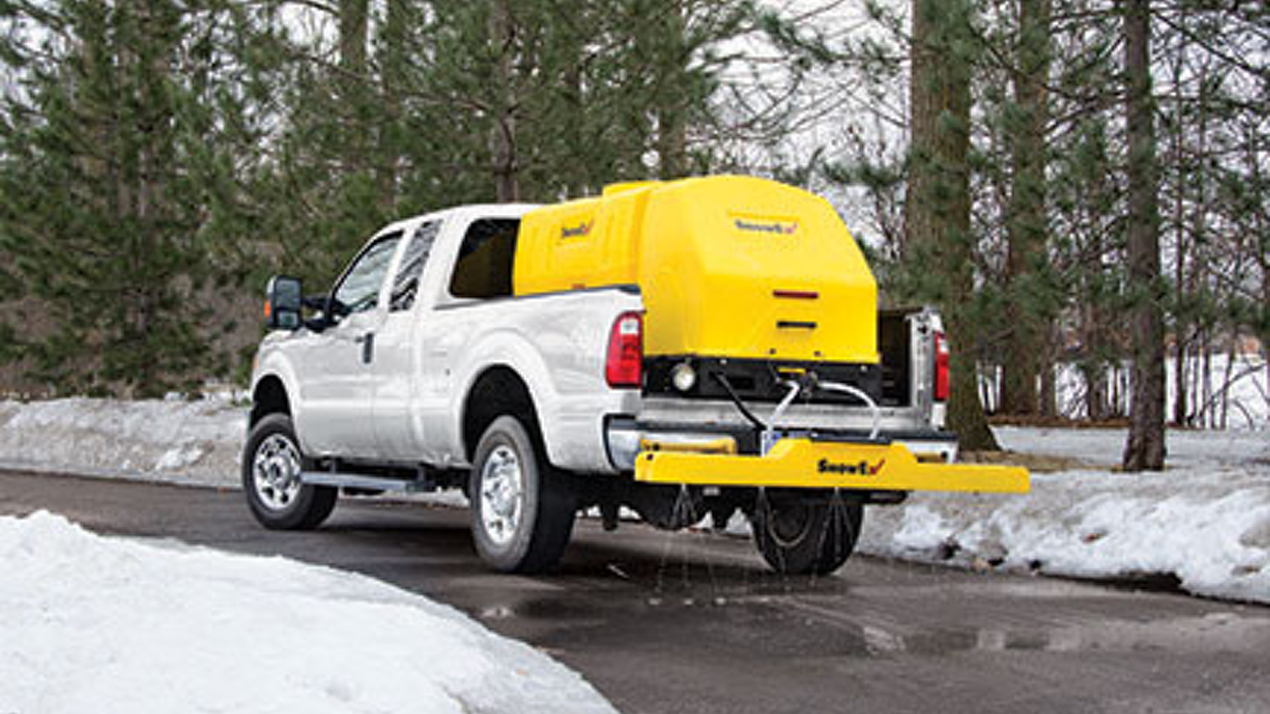
By Pam Buckley, Sustainability Manager, Douglas Dynamics
Building a High Performance Ice Control Material Program
With any project, a variety of essential tools is required to effectively and efficiently master the job. The same holds true with snow and ice control. Liquid materials and the strategies for their application are integral tools that offer versatility, capabilities and efficiencies that solids simply cannot duplicate. They are not intended to replace solid deicing strategies, but rather to complement them.
The objectives of a high performance material program are to maintain or regain friction by:
- Preventing snow and ice from bonding to pavement – Use liquids.
- Creating friction on the ice – Use solids.
- Breaking the ice pavement bond for physical removal – Use a combination of both.
The following factors should be considered in the development of a strategically balanced materials program.
- Customer Requirements
- Storm Management Objectives
- Material Selection
- Material Supply Management
Customer Requirements for Snow Removal
The scope of work stipulated in your contracts is the first factor in developing a high performance materials program. Property owners are increasingly aware of the benefits liquids offer and are starting to demand services that produce safety faster results and that are less damaging to their property. By illustrating for your clients how liquids can meet these requirements and gaining their buy-in, you achieve optimum leverage, as the expert, to manage your time and resources, which in most contract structures will also reduce your overall costs.
Snow Storm Management Objectives
The next factor when integrating liquids into your materials program is to evaluate and prioritize the following to determine your operation’s goals:
- Service requirements/deliverables for your accounts.
- Strategies you want to execute: pile-treating, anti-icing, deicing with/without pre-wet, plowing and the timing of operations required to achieve desired results.
- Equipment and labor assets available/levels of training.
Integrating liquids into your material program will expand the timeframe in which to accomplish your goals, free up resources and enable you to achieve goals faster. Using the appropriate liquid and solid materials in conjunction with each other will equip you to work most efficiently and reduce costs.
Liquid Application Objectives
| Application/Delivery | Objective | Timing of Operation | Training Level, Notes |
|---|---|---|---|
| Spreading with solids pre-wet at spreader auger or spinner | Deicing – soften compacted snow/ice | During or after storm | Beginner – requires least change to existing operations/equipment |
| Spreading with solids pre-wet at spreader auger or spinner | Deicing – soften compacted snow/ice | During or after storm | Beginner – requires least change to existing operations/equipment |
| Direct Liquid Application (DLA) pretreatment of pavement surface | Anti-icing to inhibit snow/ice from bonding | Up to 48 hours before the storm, if no rain expected | Moderate – some deicers effective at lower temps, prevents black ice/frost |
| Direct Liquid Application (DLA) pretreatment of pavement surface | Anti-icing to inhibit snow/ice from bonding | Up to 48 hours before the storm, if no rain expected | Moderate – some deicers effective at lower temps, prevents black ice/frost |
| DLA post-treatment of surface with minor accumulation | Anti-icing to inhibit snow/ice from bonding | During or after storm | Advanced – <1″ additional accumulation expected, >20° F – post plowing or liquid only |
| DLA post-treatment of surface with minor accumulation | Anti-icing to inhibit snow/ice from bonding | During or after storm | Advanced – <1″ additional accumulation expected, >20° F – post plowing or liquid only |
Material Selection
Like their solid counterparts, liquid deicers have different properties, effective temperatures, dilution factors, application rates and uses that should be considered in determining products best suited to achieve your goals.
- Basic Deicers include the following chlorides, the building blocks of most deicing products, available in both solid and liquid forms: Sodium Chloride, Calcium Chloride and Magnesium Chloride. Calcium and magnesium chloride exist naturally as liquids while sodium chloride is a solid that has to be made into a brine using water.
- Enhanced Blends are one or more of these basic chlorides with organic or proprietary additives that lower the freeze point, increase melting capacity or recovery time, reduce corrosivity, or extend the brine’s residual effect.
- Non Chlorides are commonly used for parking decks, bridges and high-end properties where corrosivity concerns outweigh cost factors.
Climate Impacts
The weather plays a big part in the deicing strategy and how effective salt can be.
- Effective Temperature: Calcium and magnesium chloride perform better below 15° F than both the solid and liquid versions of salt. Consider the typical pavement temperature range in your area of service to identify the chloride(s) that perform best. Measuring pavement temperature during an event is easily accomplished with either a hand-held or truck-mounted infrared temperature sensor.
- Moisture Present: Solids are better for wetter snow; treated and pre-wet solids are good to provide traction and soften ice. Liquids perform better in drier snows, at lower temperatures and prevent black ice and frost.
- Application Rate: In choosing an appropriate deicing material it is crucial to weigh the application rate required for effective performance against the economic efficiency of the product under anticipated conditions.
Material Supply Management
Determine the type of material procurement/production and the quantities required to best achieve your goals. The basic products are all available nationwide, however calcium and magnesium chloride are more cost effective closer to their regional sources of supply.
Supply availability and storage are critical factors in determining the best liquid products for your materials program and whether to buy or produce them yourself.
Cost vs Purchase Price
If the purchase price of materials were the only factor to be considered in developing a materials program, then it is impossible to beat salt. However, other factors also impact the ‘true costs’ involved. Since application rates of liquids are noticeably lower due to their effectiveness and the precision with which they are applied, the overall material and labor savings achieved using liquids can result in reduced ‘true cost,’ even when the product price is more. Liquids may have a higher price point than rock salt, but because you typically use and lose less, they can ultimately end up ‘costing’ less.
According to the Salt Institute, salt brine is the most effective deicer for anti-icing above 15° F. Because of salt brine’s wide ranging usefulness, producing it yourself can add decisive value to a high performance and ultimately cost effective materials program.
Liquid Procurement & Production Methods
| Method | Pros | Cons | Equipment |
|---|---|---|---|
| Pretreating Stockpiles | Enhances solid material performance, reduces freeze point and corrosivity | Still needs to be pre-wet for optimal efficiency | Liquid Storage/Tote, Transfer/Application System |
| Pretreating Stockpiles | Enhances solid material performance, reduces freeze point and corrosivity | Still needs to be pre-wet for optimal efficiency | Liquid Storage/Tote, Transfer/Application System |
| Brine Making Make Your Own (MYO) | Most cost effective over long run, added supply control, relatively quick ROI | Greater startup costs, labor, training required | Brine Maker, Storage & Transfer/Application System |
| Brine Making Make Your Own (MYO) | Most cost effective over long run, added supply control, relatively quick ROI | Greater startup costs, labor, training required | Brine Maker, Storage & Transfer/Application System |
| Purchasing in Bulk | Easy, value-added product engineering, consistency | Supply availability, higher purchase price than MYO | Liquid Storage & Transfer/Application System |
| Purchasing in Bulk | Easy, value-added product engineering, consistency | Supply availability, higher purchase price than MYO | Liquid Storage & Transfer/Application System |
| Purchasing by Tote | Easy, value-added product engineering, good for entry level | Supply availability, higher purchase price than MYO | Transfer/Application System |
| Purchasing by Tote | Easy, value-added product engineering, good for entry level | Supply availability, higher purchase price than MYO | Transfer/Application System |
We would like to acknowledge Clarissa Keen of EnviroTech Services for contributing to this piece.
